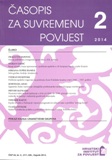Egipatska vlada i rješavanje izbjegličke problematike tijekom Drugoga svjetskog rata
EGYPTIAN GOVERNMENT AND THE SETTLEMENT OF REFUGEE ISSUES DURING THE WORLD WAR II
Author(s): Kornelija AjlecSubject(s): History
Published by: Hrvatski institut za povijest
Keywords: World War II; Egypt; Refugees; MERRA; UNRRA; El Shatt
Summary/Abstract: During the World War II, tens of thousands of refugees took shelter on the territory of the Kingdom of Egypt, Persia and the broader Middle East region, then consequentially in India, East African countries and even in Mexico. Poles, Greeks, Yugoslavs and mostly Croats prevailed. Most of these refugees were concentrated in Egypt and on the Middle East since the Egyptian government was generously receiving, under the influence of Great Britain, first refugees from Greece in 1941. In any sense, the Egyptian government, influenced by the English-Egyptian Agreement from 1936, was helping the Allies to a far greater extent, as it is mostly evident from historical works, despite the fact that Egypt officially declared war on Germany and Japan not earlier than 1945, and on Italy it had not been declared at all. The Egyptians were offering help despite a difficult economic environment in that predominantly agrarian country. Consequently, Egypt began putting a limit on the acceptance of refugees, or in other words, setting conditions on it. The restrictions were initially felt by the primarily British organizations and government offices in Egypt, and afterwards by international organizations and humanitarian institutions as well. The Egyptian government put a demand on the acceptance of refugees by asking the Allies’ warranty for repatriation of refugees after the war, with their location in the camps during the stay and the limitation of information on refugees in local media institutions.
Journal: Časopis za suvremenu povijest
- Issue Year: 46/2014
- Issue No: 2
- Page Range: 295-318
- Page Count: 24
- Language: Croatian

